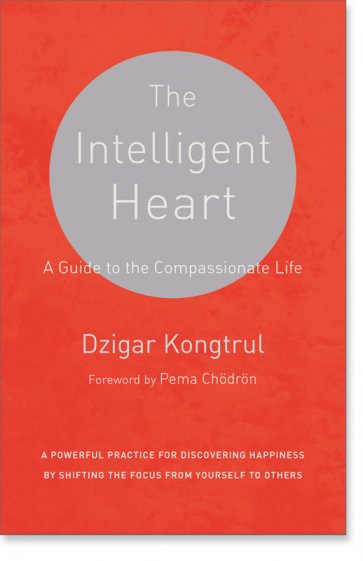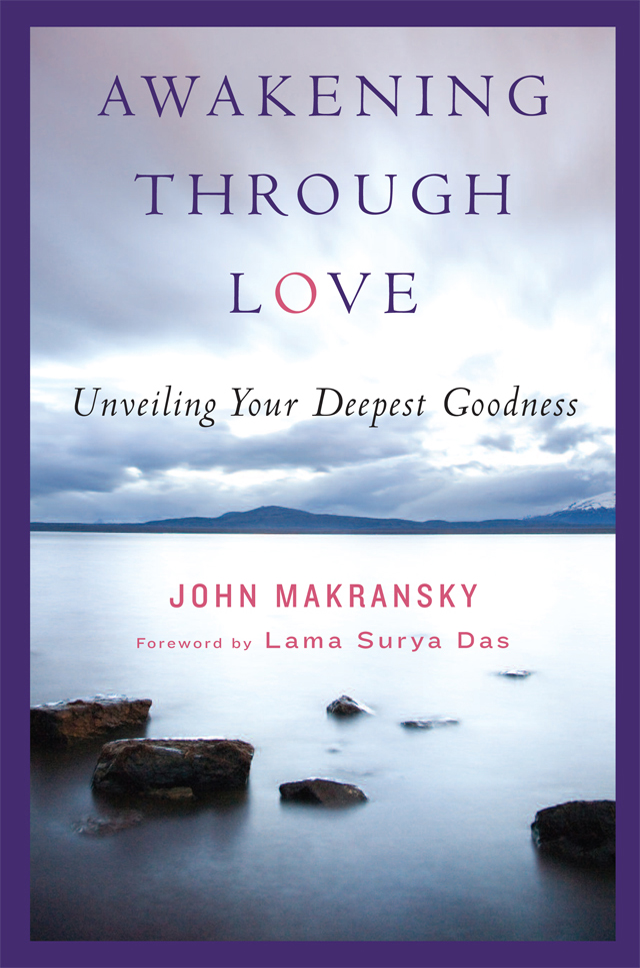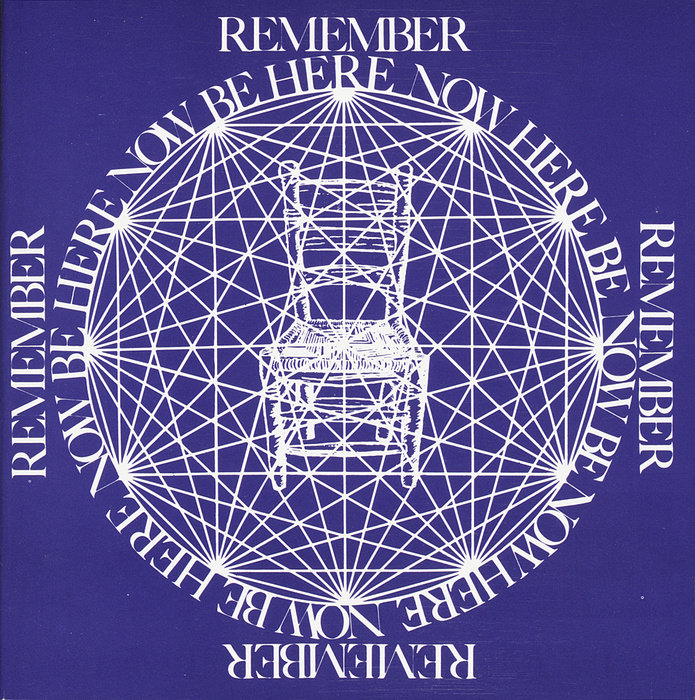YOU MIGHT ALSO LIKE
CLEAR ALL
BY TOPIC
BY TEACHER
BY TYPE
FILTER

TOPIC
- Forgiveness (98)
- Gratitude (85)
- Romantic Relationships (82)
- Buddhism (57)
- Communication Skills (56)
- Anxiety (54)
- Life Challenges (54)
- Mindfulness Practices (54)
- Depression (49)
- Meditation (48)
- Self-Care (47)
- Awareness (45)
- Stress Management (44)
- Neuroscience (39)
- Resilience (39)
- Mindfulness Meditation (37)
- Honoring Emotion (34)
- Inner Peace (34)
- Self-Development (34)
- Self-Compassion (33)
- Self-Discovery (33)
- Well-Being (32)
- Empathy (31)
- Marriage (31)
- BIPOC Well-Being (30)
- Joy (30)
- Parenting (30)
- Anger (29)
- Building Character (29)
- Cancer (26)
- Kindness (26)
- Letting Go (25)
- Psychology (25)
- Presence (24)
- Self-Reflection Practices (24)
- Emotional Intelligence (EQ) (23)
- Intimacy (23)
- Stress (23)
- Trauma Healing (23)
- Inner Life (22)
- Neurodiversity (22)
- Finding Meaning (21)
- Self-Acceptance (21)
- Self-Love (21)
- Community Healing (20)
- Divorce and Breakup (20)
- Transformation (20)
- Vulnerability (20)
- Suffering (19)
- Black Well-Being (18)
- Friendship (18)
- Love (18)
- Spiritual Growth (18)
- ADD/ADHD (17)
- Athlete Well-Being (17)
- Compassion Meditation (17)
- Fear (17)
- Intention (17)
- Leadership (17)
- Lovingkindness (17)
- Mind-Body Connection (17)
- Offering Support to Others (17)
- Search for Purpose (17)
- Authenticity (16)
- Fellowship and Community (16)
- Generosity (16)
- Neuroplasticity (16)
- Self-Esteem (16)
- Acceptance (15)
- Activism/Service (15)
- Brain Health (15)
- Habits of Mind (15)
- Positive Psychology (15)
- Positive Thinking (15)
- Self-Healing (15)
- Anger Management (14)
- Breathwork (14)
- Courage (14)
- Entrepreneurship (14)
- Family Dynamics (14)
- Physical Health (14)
- Self-Actualization (14)
- Self-Limiting Beliefs (14)
- Self-Worth (14)
- Shame (14)
- Tibetan Buddhism (14)
- Connection (13)
- Grief (13)
- Setting Limits and Boundaries (13)
- Suicide (13)
- Values (13)
- Work-Life Balance (13)
- Child’s Emotional Growth (12)
- Inner Strengths (12)
- Mental Health Challenges (12)
- Optimism (12)
- PTSD (12)
- Spiritual Awakening (12)
- Cognitive Behavioral Therapy (11)
- Negative Self-Talk (11)
- Spiritual Development (11)
- Withholding (11)
- Addiction (10)
- Conflict Resolution (10)
- Growth Mindset (10)
- Habit Formation (10)
- Performance Anxiety (10)
- Self-Realization (10)
- Sex (10)
- Spiritual Practices (10)
- Burnout (9)
- Chronic Anxiety (9)
- Enlightenment (9)
- Goal Setting (9)
- Grit (9)
- Interdependence (9)
- Performance Pressure (9)
- Personal Development (9)
- Speaking Your Truth (9)
- Talk Therapy (9)
- Trust (9)
- Women’s Well-Being (9)
- Work Relationships (9)
- Belonging (8)
- Connection with Nature (8)
- Guided Meditation (8)
- Healing Approaches (8)
- Human Potential (8)
- Identity (8)
- LGBTQIA Well-Being (8)
- Passive-Aggressive Behavior (8)
- Peak Performance (8)
- Self-Mastery (8)
- Self-Pressure (8)
- Toxic Relationships (8)
- Young Adult Well-Being (8)
- Accepting Love (7)
- Autism (7)
- Confidence (7)
- Decision Making (7)
- Dysfunctional Childhood (7)
- Endurance (7)
- Female Empowerment (7)
- Focus (7)
- Guilt (7)
- Journaling (7)
- Racial Healing (7)
- Racial Justice (7)
- Social Justice (7)
- Social Responsibility (7)
- Spiritual Life (7)
- Trauma (7)
- Adaptability (6)
- Aging (6)
- Asking for Help (6)
- Caregiver Well-Being (6)
- Cross-Cultural Dynamics (6)
- Death or Loss of a Loved One (6)
- Dharma (6)
- Disabled Well-Being (6)
- Empowerment (6)
- Facing Own Death (6)
- Failure (6)
- Loneliness (6)
- Longevity (6)
- Perception (6)
- Relationship with Money (6)
- Science and Spirituality (6)
- Veteran Well-Being (6)
- Work Challenges (6)
- Affirmations (5)
- Children’s Well-Being (5)
- Cognitive Psychology (5)
- Consciousness (5)
- Death and Dying (5)
- Disconnection (5)
- Eating Disorders (5)
- Imagination and Creativity (5)
- Insight (Vipassana) Meditation (5)
- Living with Illness (5)
- Lovingkindness Meditation (5)
- Manifestation (5)
- Moral Philosophy (5)
- Motherhood (5)
- Motivation (5)
- Patience (5)
- Post-Traumatic Growth (5)
- Relationship with Time (5)
- Self-Control (5)
- Self-Reckoning (5)
- Shadow (5)
- Spiritual Direction (5)
- Abandonment (4)
- Attachment Theory (4)
- Body Scan Meditation (4)
- Child’s ADD/ADHD (4)
- Christianity (4)
- Clinical Depression (4)
- Collaboration (4)
- Conscience (4)
- Creative Well-Being (4)
- Ego Transcendence (4)
- Epigenetics (4)
- Genetics (4)
- Global Challenges (4)
- Hope (4)
- Humility (4)
- Karma (4)
- Latinx Well-Being (4)
- Narcissism (4)
- Neuropsychology (4)
- New Relationships (4)
- Nonviolence (4)
- Oneness (4)
- Positive Self-Talk (4)
- Productivity (4)
- Regret (4)
- Retirement (4)
- Self-Expression (4)
- Self-Reliance (4)
- Sexuality (4)
- Social Anxiety (4)
- Spiritual Quest (4)
- AAPI Well-Being (3)
- Betrayal (3)
- Child’s Trauma (3)
- Chronic Pain (3)
- Climate Change (3)
- Codependency (3)
- Compassion Fatigue (3)
- Criticism and Rejection (3)
- Death or Loss of a Parent (3)
- Ego (3)
- Exercise (3)
- Forest Bathing (3)
- Freedom (3)
- Gender Challenges (3)
- Grace (3)
- Highly Sensitive People (3)
- Indigenous Well-Being (3)
- Integrative Medicine (3)
- Integrity (3)
- LGBTQIA Relationships (3)
- Masculine/Feminine Dynamics (3)
- Memoir (3)
- Men’s Well-Being (3)
- Military to Civilian Re-entry (3)
- Othering (3)
- Panic Attacks (3)
- Play (3)
- Prayer (3)
- Psychology and Spirituality (3)
- Transitions (3)
- Walking Meditation (3)
- Yoga (3)
- Zen Buddhism (3)
- Academic Struggles (2)
- Access to Education (2)
- Addiction Recovery (2)
- Altered States (2)
- Awe (2)
- Biofeedback (2)
- Body Image (2)
- Buddha Nature (2)
- Child’s Anxiety (2)
- Child’s Challenging Behavior (2)
- Chronic Health Conditions (2)
- Competition (2)
- Curiosity (2)
- Dark Night of the Soul (2)
- Deciding to Have Children (2)
- Emotional Labor (2)
- Environmental Justice (2)
- Healthy Eating (2)
- Higher Calling (2)
- Holism (2)
- Hypnosis (2)
- Infidelity (2)
- Inner Child (2)
- Intergenerational Trauma (2)
- Jealousy/Envy (2)
- Laughter Therapy (2)
- LGBTQIA Sexuality (2)
- Living as an Empath (2)
- Non-Duality (2)
- OCD (2)
- Philosophical Approaches (2)
- Problem Solving (2)
- Race and Gender (2)
- Racial Identity (2)
- Racism (2)
- Ritual (2)
- Situational Depression (2)
- Somatic Practices (2)
- Spiritual Healing (2)
- Spirituality and Health (2)
- Stoicism (2)
- Storytelling (2)
- Taoism (2)
- The Divine (2)
- Transgender Well-Being (2)
- Traumatic Grief (2)
- Visualization (2)
- A Course in Miracles (1)
- Acupressure (1)
- Animal Connection (1)
- Art Therapy (1)
- Autoimmune Disease (1)
- Body Positivity (1)
- Building Culture (1)
- Cannabis/CBD (1)
- Challenges with Teens (1)
- Channeling (1)
- Child’s Autism (1)
- Christian Mysticism (1)
- Clairvoyance and Precognition (1)
- Cognition (1)
- Collective Trauma (1)
- Comparing Belief Traditions (1)
- Cross-Cultural Parenting (1)
- Death or Loss of a Sibling (1)
- Despair (1)
- Diet and Nutrition (1)
- Digital Life (1)
- Divination Systems (1)
- Domestic Abuse (1)
- Doubt (1)
- Ecospirituality (1)
- Ego Dissolution (1)
- Energy Healing (1)
- Enneagram (1)
- Faith and Identity (1)
- Faith Healing (1)
- Fatigue (1)
- Feminism (1)
- Flower Essences (1)
- God (1)
- Goddess (1)
- Handling a Loved One’s Illness (1)
- Healing Touch (1)
- Heartmath (1)
- Hero’s Journey (1)
- Hinduism (1)
- Hospice (1)
- Household Labor (1)
- Imposter Syndrome (1)
- Indigenous Healing Approaches (1)
- Insomnia (1)
- Intuition (1)
- Islam (1)
- Judaism (1)
- Jungian Analysis (1)
- Kids and Sports (1)
- LGBTQIA Children (1)
- LGBTQIA Parents (1)
- Life-Altering Injury (1)
- Loss of an Animal Companion (1)
- Love Languages (1)
- Managing Energy (1)
- MDMA (1)
- Memory (1)
- Midlife Crisis (1)
- Misophonia (1)
- Mysticism (1)
- Native American Beliefs (1)
- Nutritional Medicine (1)
- Personality Disorders (1)
- Personality Typing (1)
- Poetry (1)
- Pregnancy and Childbirth (1)
- Psychedelic Research (1)
- Psychedelic-Assisted Therapy (1)
- Psychoanalysis (1)
- Racial Discrimination (1)
- Raising Daughters (1)
- Rebirth (1)
- Rest (1)
- Runes (1)
- Sacred Feminine (1)
- Sexual Assault or Abuse (1)
- Sexual Health (1)
- Sleep (1)
- Sleep Disorders (1)
- Slumps (1)
- Social Presence (1)
- Social Psychology (1)
- Soul Mission (1)
- Sound Healing (1)
- Spirituality and Politics (1)
- Sufism (1)
- T’ai Chi (1)
- Tarot (1)
- Transcendent Experience (1)
- Unconscious Bias (1)
- Unfulfilled Career (1)
- Visions and Hallucinations (1)
- War (1)
- Weight Concerns (1)
- Whiteness (1)
- Women’s Rights (1)
- Yoga Therapy (1)
- Youth Activism (1)
FILTER

TEACHER
- Jon Kabat-Zinn (11)
- Thubten Chodron (11)
- Robert Enright (10)
- David Steindl-Rast (9)
- Martin Luther King Jr. (9)
- Richard Davidson (9)
- Scott Shute (9)
- Dacher Keltner (8)
- Neil Pasricha (8)
- Rick Hanson (8)
- Ed Diener (7)
- James Doty (7)
- Joseph Goldstein (7)
- Marc Ian Barasch (7)
- Paul Gilbert (7)
- Andy Puddicombe (6)
- Esther Perel (6)
- Jack Kornfield (6)
- James Baraz (6)
- Joan Halifax (6)
- Matthieu Ricard (6)
- Nataly Kogan (6)
- Oprah Winfrey (6)
- Pema Chödrön (6)
- Tara Brach (6)
- Amishi Jha (5)
- Desmond Tutu (5)
- Edward Hallowell (5)
- Ellen Langer (5)
- Emiliana Simon-Thomas (5)
- Gary Chapman (5)
- Julie Schwartz Gottman (5)
- Lisa Feldman Barrett (5)
- Lori Gottlieb (5)
- Sharon Salzberg (5)
- Dan Buettner (4)
- Daniel Goleman (4)
- Daniel J. Siegel (4)
- Gabor Maté (4)
- Gay Hendricks (4)
- Jack Canfield (4)
- John Gottman (4)
- Karla McLaren (4)
- Marci Shimoff (4)
- Mihály Csíkszentmihályi (4)
- Noah Levine (4)
- Yongey Mingyur Rinpoche (4)
- Bhikku Anālayo (3)
- Chögyam Trungpa (3)
- Daniel Amen (3)
- Daniel Gilbert (3)
- Eckhart Tolle (3)
- Elaine Aron (3)
- Elizabeth Lesser (3)
- Ethan Nichtern (3)
- Forrest Hanson (3)
- Gabrielle Bernstein (3)
- Gretchen Rubin (3)
- Harville Hendrix (3)
- Helen LaKelly Hunt (3)
- John Bradshaw (3)
- Laurie Santos (3)
- Lodro Rinzler (3)
- Mark Epstein (3)
- Miles Neale (3)
- Naomi Osaka (3)
- Ram Dass (3)
- Ramani Durvasula (3)
- Shauna Shapiro (3)
- Stan Tatkin (3)
- Stephen Levine (3)
- Terri Cole (3)
- Toni Bernhard (3)
- Adam Grant (2)
- Amy Morin (2)
- Andrew Solomon (2)
- Ashley Neese (2)
- Brendon Burchard (2)
- Chan Khong (2)
- Craig Hamilton (2)
- don Miguel Ruiz (2)
- Gary Zukav (2)
- Gaylon Ferguson (2)
- Gerald Jampolsky (2)
- Helen Weng (2)
- Hyla Cass (2)
- J. Krishnamurti (2)
- Jacqueline Carter (2)
- Jeff Foster (2)
- Jessica Dore (2)
- Joan Chittister (2)
- Joanne Cacciatore (2)
- John C. Parkin (2)
- John Sarno (2)
- Kathlyn Hendricks (2)
- Kim Eng (2)
- Krista Tippett (2)
- Lissa Rankin (2)
- Louise Hay (2)
- Marie Forleo (2)
- Marie-Nathalie Beaudoin (2)
- Martin Seligman (2)
- Matthew Fox (2)
- Maya Angelou (2)
- Melanie Joy (2)
- Michael Phelps (2)
- Mirabai Bush (2)
- Nikki Mirghafori (2)
- Norman Fischer (2)
- Poppy Jamie (2)
- Ralph De La Rosa (2)
- Rhonda Magee (2)
- Robert Thurman (2)
- Rumi (2)
- Russell Brand (2)
- Shakti Gawain (2)
- Sharon Strand Ellison (2)
- Shefali Tsabary (2)
- Tal Ben-Shahar (2)
- Abraham Joshua Heschel (1)
- Alain de Botton (1)
- Alan Watts (1)
- Amma (1)
- Andrew Weil (1)
- angel Kyodo williams (1)
- Angela Duckworth (1)
- Angeles Arrien (1)
- Anna Sale (1)
- Arianna Huffington (1)
- Aristotle (1)
- Barbara Fredrickson (1)
- bell hooks (1)
- Bernie S. Siegel (1)
- Bertrand Russell (1)
- Bessel van der Kolk (1)
- Biet Simkin (1)
- BJ Miller (1)
- Blaise Aguirre (1)
- Brené Brown (1)
- Bruce Lipton (1)
- Camille Helminski (1)
- Charles Tart (1)
- Chip Conley (1)
- Connie Zweig (1)
- Cynthia Bourgeault (1)
- Dan Millman (1)
- David J. Wolpe (1)
- David Whyte (1)
- Debbie Ford (1)
- Deepak Chopra (1)
- Dorothy Day (1)
- Dorothy Firman (1)
- Elizabeth Gilbert (1)
- Elizabeth Stanley (1)
- Eric Maisel (1)
- Frank Ostaseski (1)
- Gary Gach (1)
- Gordon Neufeld (1)
- Iyanla Vanzant (1)
- James Hillman (1)
- Jan Willis (1)
- Jana Long (1)
- Jay Shetty (1)
- Jennifer Peepas (1)
- Jesus (1)
- Jetsunma Tenzin Palmo (1)
- JoAnna Hardy (1)
- John Welwood (1)
- Jon Bernie (1)
- Jonathan Haidt (1)
- Joseph M. Marshall III (1)
- Judith Orloff (1)
- Judson Brewer (1)
- Julia Cameron (1)
- Kamilah Majied (1)
- Karen Armstrong (1)
- Karen Casey (1)
- Kate Johnson (1)
- Kelly McGonigal (1)
- Kristin Neff (1)
- La Sarmiento (1)
- Lama Surya Das (1)
- Larry Ward (1)
- Larry Yang (1)
- Leah Guy (1)
- Lewis Howes (1)
- Linda Graham (1)
- Lindo Bacon (1)
- Lise Van Susteren (1)
- Lynne McTaggart (1)
- Lynne Twist (1)
- Marianne Williamson (1)
- Mark Victor Hansen (1)
- Mark Wolynn (1)
- Marshall Rosenberg (1)
- Martha Beck (1)
- Mary Oliver (1)
- Michael Pollan (1)
- Monnica Williams (1)
- Naomi Shihab Nye (1)
- Natalie Goldberg (1)
- Neale Donald Walsch (1)
- Nicole LePera (1)
- Oliver Sacks (1)
- Ondrea Levine (1)
- Panache Desai (1)
- Paramahansa Yogananda (1)
- Phil Jackson (1)
- Phillip Moffitt (1)
- Piero Ferrucci (1)
- Raymond Buckland (1)
- Rebecca Solnit (1)
- Reginald Ray (1)
- Rich Roll (1)
- Robert Sapolsky (1)
- Roxanne Dault (1)
- Ruby Wax (1)
- Sadhguru (1)
- Saeed Jones (1)
- Sally Kempton (1)
- SARK (1)
- Seyyed Hossein Nasr (1)
- Shinzen Young (1)
- Shiva Rea (1)
- Simone Biles (1)
- Sister Jenna (1)
- Sonia Choquette (1)
- Stephan Bodian (1)
- Stephanie Y. Evans (1)
- Stephen Covey (1)
- Swami Mukundananda (1)
- Sylvia Boorstein (1)
- Ted DesMaisons (1)
- Terry Real (1)
- Tony Gaskins Jr. (1)
- V (1)
- Wayne Muller (1)
- Wendell Berry (1)
- William Bloom (1)




 There is a kind of happiness and wonder that makes you serious. It is too good to waste on jokes.
There is a kind of happiness and wonder that makes you serious. It is too good to waste on jokes.






